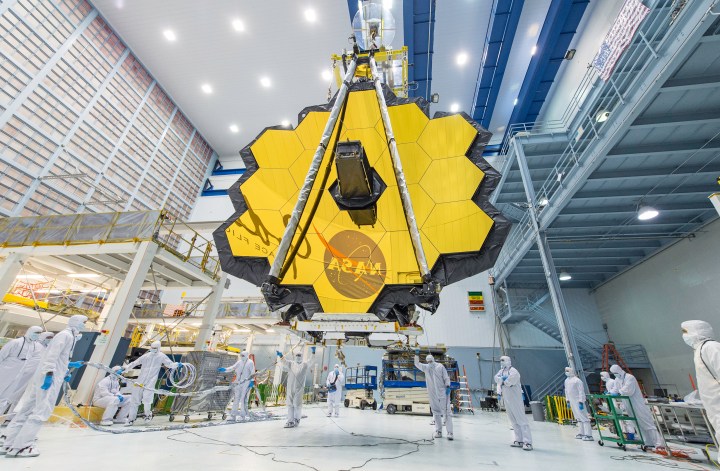
The James Webb Space Telescope is tragically stuck in a cycle of hype and disappointment.
Last year, NASA welcomed spring with a beautiful new image of its groundbreaking, sky-gazing telescope. But in March the space agency announced that development had been delayed until 2020 due to technical hangups and “avoidable errors.” On top of that, NASA officials admitted costs could rise above the $8 billion spending cap mandated by Congress.
This week brought more bad news. The telescope, originally scheduled to launch this fall, won’t be ready until at least March 30, 2021 and will required another billion dollars to complete, according to a report by an independent review board. That brings the total cost to $9.66 billion.
Problems were encountered with the portion of the spacecraft meant to house the expandable telescope in flight, which started a review of the program. All of the hardware is complete, according to NASA’s acting administrator Robert Lightfoot. “However,” he told reporters in a teleconference, “work performance challenges that were brought to light have prompted us to take some action.”
During a shake test performed by Northrup Grumman, the Webb’s main contractor, some parts were rattled loose from the spacecraft. The review board was then appointed to look into the matter. Their assessment was announced on Wednesday.
“Webb should continue based on its extraordinary scientific potential and critical role in maintaining U.S. leadership in astronomy and astrophysics,” Tom Young, the chair of the review board, said in a statement. “Ensuring every element of Webb functions properly before it gets to space is critical to its success.”
Space missions have always been accompanied by delays. The Webb is no exception. Just last September, NASA announced the telescope would miss its October 2018 target launch, pushing liftoff back to between March and June of 2019. Upon further review, the agency has decided to play safe, not sorry, and set March 2021 as a more realistic date. Meanwhile, other projects proceed. NASA’s planet-hunting TESS satellite sent back its first image in May — and it’s amazing. (And there’s quite a few way-off worlds for TESS to study; from the Dracula planet to Earth’s bigger, older cousin, here are the 10 best exoplanets discovered so far.)
“The more we learn more about our universe, the more we realize that Webb is critical to answering questions we didn’t even know how to ask when the spacecraft was first designed,” said Thomas Zurbuchen, a NASA administrator. “Webb is poised to answer those questions, and is worth the wait. The valuable recommendations of the IRB support our efforts towards mission success; we expect spectacular scientific advances from NASA’s highest science priority.”
After two decades of construction, the agency announced the completion of the James Webb Space Telescope in November of 2017, following the first important pretest to measure its primary mirror. Over the next few months, the telescope went through a series of grueling trials that shook, rattled, and froze the state-of-the-art machine, subjecting it to conditions it will have to face in outer space. With the final gold-coated segment of its 21-foot-wide mirror array in place, the telescope can now sprawl like an enormous sunflower.
When — if — it ever launches, the Webb will be the most powerful telescope in existence, built to capture infrared light from the first galaxies of the ancient universe. To catapult the satellite into the heavens, the Webb telescope’s sunshield will be folded a dozen times before being packed into a bullet-shaped capsule. Once 930,000 miles distant from Earth (at the Earth-Sun L2 Lagrange point), the array will unravel in a glorious, sky-gazing display.
“The groundbreaking sunshield design will assist in providing the imaging of the formation of stars and galaxies more than 13.5 billion years ago,” Jim Flynn, Webb sunshield manager, said in a statement last November. “The delivery of this final flight sunshield membrane is a significant milestone as we prepare for 2018 launch.”
At an estimate $9.66 billion in construction and operating costs, the Webb telescope is more than four time as expensive as its predecessor, the Hubble Space Telescope, and 100 times more powerful. However, where the Hubble was within reach of astronauts who could spacewalk to the telescope if anything were to go wrong, the Webb will be too far into space for an easy mission. For that reason, it’s imperative that everything work as planned before the Webb telescope is sent on its journey.
Updated on June 28: NASA delays launch until 2021.


